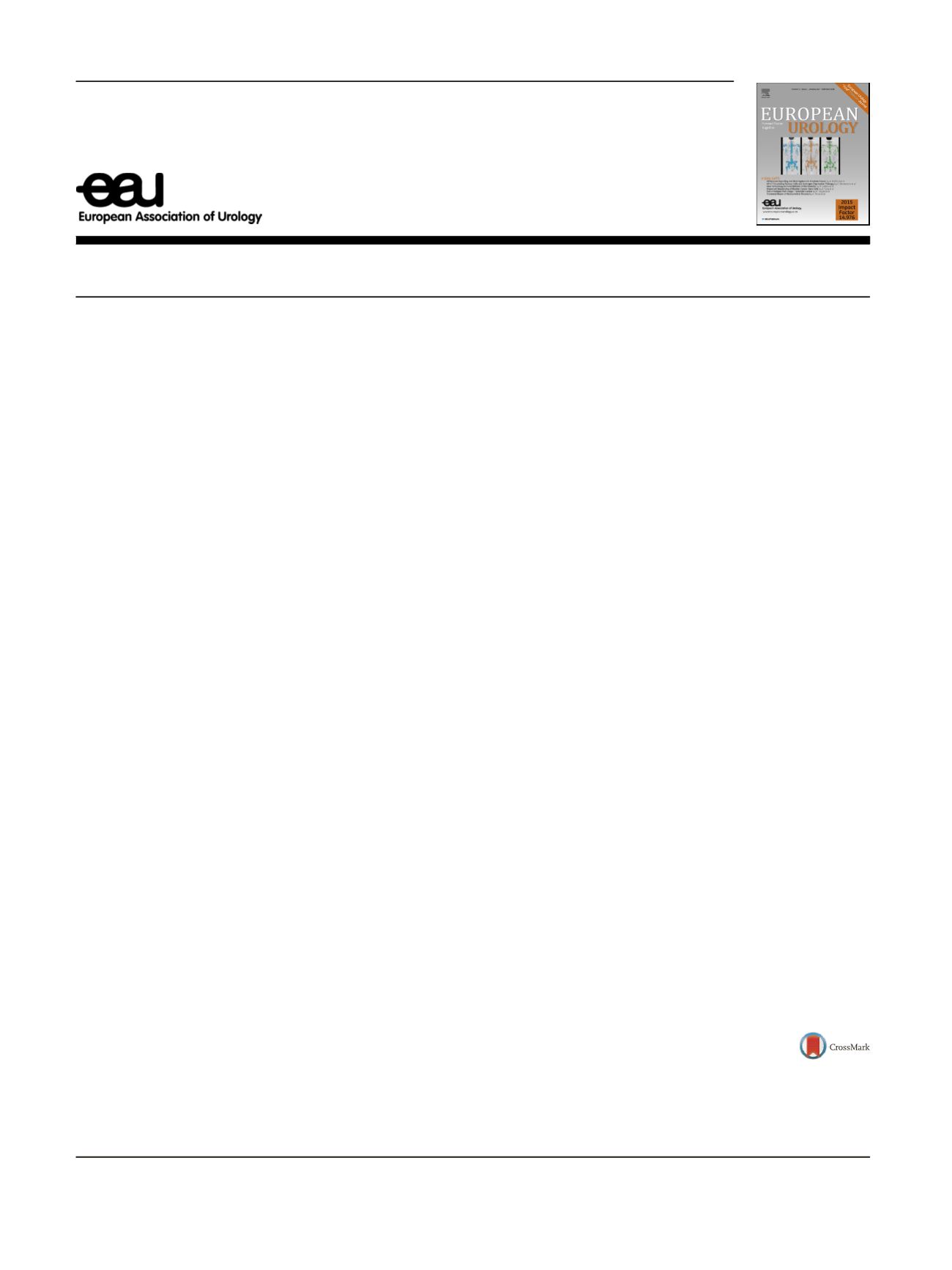

Words of Wisdom
Re: Comprehensive Qualitative Assessment of Urethral
Stricture Disease: Toward the Development of a Patient
Centered Outcome Measure
Breyer BN, Edwards TC, Patrick DL, Voelzke BB
J Urol. In press.
http://dx.doi.org/10.1016/j.juro.2017.05.077Expert
’
s summary:
The authors have created a disease-specific patient-reported
outcome measure (PROM) for urethral stricture disease (USD).
They followed an intense protocol that involved pre- and post-
urethroplasty USD patients at every step of the process from
conceptualization to refinement of the items. A different
cohort of USD patients and surgeons specializing in urethral
reconstruction then separately prioritized the items.
The items selected as themost important included 31 non-
redundant items: 27 new and only four legacy items from
existing questionnaires. Urinary items were more important
than sexual items. Agreement between physicians and
patients was 53%: patients were more worried about acute
urinary retention, post-void dribbling, spraying, having to sit
to void, and impact on activities of daily living; physicians
ranked straining and a weak stream as most important.
Expert
’
s comments:
Other PROMs have been used to measure and track success in
USD surgery. While International Prostate Symptom Score
(IPSS) results correlate with other measures of urethroplasty
success
[1] ,the IPSS is not validated in USD. Furthermore, the
items in the IPSS were derived from patients with benign
prostatic enlargement, who we would expect to have very
different symptoms and anxieties from USD patients. The
USD-specific PROM developed by Jackson et al.
[2]represents
an advance over the IPSS in that it is disease-specific and was
developed with patient input. However, it did not include
patient input at every stage of the process and the items were
borrowed from existing validated questionnaires and not
developed de novo for USD patients.
Every urethral reconstruction surgeon has encountered
patients with a wide open urethra after urethroplasty who
are dissatisfied with their outcome. By contrast, we have
had patients with a 12F urethral lumen after urethroplasty
who could not be happier. The TURNS group
( www. turnsresearch.org/ )and others have documented these
discrepancies
[3,4]. In fact, Erickson et al.
[3]characterized
the essence of this problem by categorizing patients as
“
anatomic success
”
versus
“
functional success
”
. Breyer et al
expand on this issue in that they demonstrate that surgeons
and patients ranked different items as being important.
The field of urethral reconstruction is eager for a measure
that can settle some of the uncertainty in the field around
what constitutes success. It is intuitive that the gold
standard measure of success for a quality-of-life problem
should be a PROM. Furthermore, the PROM should be
patient-derived and disease-specific. We look forward to
seeing the results of validation testing, the next step in the
process being followed by Breyer et al.
Conflicts of interest:
The author is a consultant for American Medical
Systems, Boston Scienti
fi
c, PercuVision, and Urotronic, and has a
fi
nancial interest in PercuVision.
References
[1]
Morey AF, McAninch JW, Duckett CP, Rogers RS. American Urological Association symptom index in the assessment of urethroplasty outcomes. J Urol 1998;159:1192 – 4.
[2]
Jackson MJ, Sciberras J, Mangera A, et al. De fi ning a patient-reported outcomemeasure for urethral stricture surgery. Eur Urol 2011;60:60.
[3]
Erickson BA, Elliott SP, Voelzke BB, et al. Multiinstitutional 1-year bulbar urethroplasty outcomes using a standardized prospective cystoscopic follow-up protocol. Urology 2014;84:213.
[4]
Bertrand LA, Voelzke BB, Elliott SP, et al. Measuring and predicting patient dissatisfaction after anterior urethroplasty using patient reported outcomes measures. J Urol 2016;196:453.
Sean P. Elliot
t *Urology Department, University of Minnesota, Minneapolis, MN, USA
*Urology Department, University of Minnesota, 420 Delaware Street,
Minneapolis, MN 55455, USA.
E-mail address:
selliott@umn.edu . http://dx.doi.org/10.1016/j.eururo.2017.08.030© 2017 Published by Elsevier B.V. on behalf of
European Association of Urology.
E U R O P E A N U R O L O GY 7 2 ( 2 0 17 ) 10 2 2 – 10 2 6available at
www.scienced irect.comjournal homepage:
www.europeanurology.com0302-2838/
















